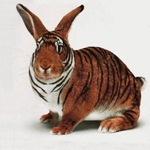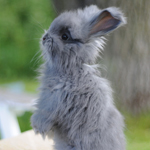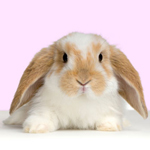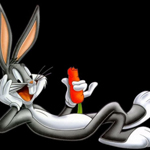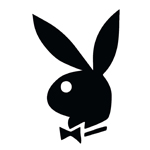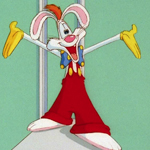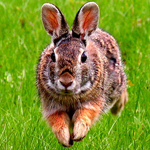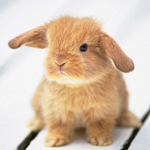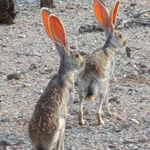
From ancient times, the rabbit and the hare have symbolized abundance, sexuality, lust and fertility. To 'breed like a rabbit' suggests rampant and unrestrained growth. In African and American oral tradition, the rabbit is an archetypal trickster, sometimes hero, almost always lovable, but often amoral. Likewise in Japanese lore, the white rabbit proves too clever and arrogant for its own good, meeting disastrous ends. In the Chinese zodiac, the rabbit is the happiest of the twelve symbols, being kind, popular, affectionate and obliging. In China, the hare is also a symbol of long life. In parts of Asia and the Americas, the 'man in the moon' is perceived as 'the rabbit in the moon'.
Many myths -- Cherokee and Sioux in particular - involve the tricky rabbit who often falls prey to his own boastfulness. For some native peoples in Eastern Canada, the Great Hare attained supreme deity status, while the ancient Aztecs worshipped a group of deities known as 'the 400 rabbits'.
The Tale of Peter Rabbit by Beatrix Potter published in 1902, became something of a literary phenomenon. Peter Rabbit even inspired an entire genre of literature written, marketed and aimed solely for children. It also launched an ancillary empire of Peter Rabbit products beyond books, but inspired by Peter Rabbit, of toys, clothing, wall paper, furniture, crockery, and of course in the modern era, all forms of media such as cartoons, videos, games and much, much more. Peter Rabbit even has his own web site!
Building upon the rabbit's mythical history of lust, sex, and playing tricks, some of the most memorable cartoon characters have become stars of the Silver Screen. In "Who Killed Roger Rabbit" we have the super-seductive Jessica Rabbit. If the all-time favorite cartoon rabbit is Bugs Bunny, turning the rabbit character on its head is the Wallace and Gromit franchise, which produced the Academy Award winning "Curse of the Were-Rabbit", an oxymoron if ever there was one.
See also: Animal Tattoo Index and Lucky Tattoo Index.


